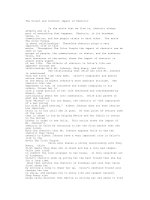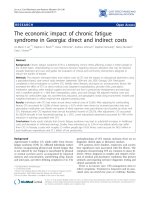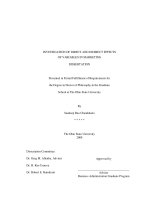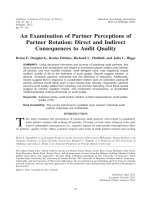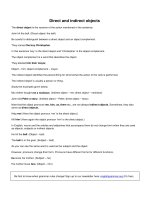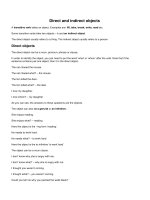Direct and indirect objects (1)
Bạn đang xem bản rút gọn của tài liệu. Xem và tải ngay bản đầy đủ của tài liệu tại đây (8.19 KB, 1 trang )
Direct and indirect objects
The
direct object
is the receiver of the action mentioned in the sentence.
John hit the ball. (Direct object: the ball)
Be careful to distinguish between a direct object and an object complement.
They named
the boy Christopher
.
In this sentence ‘boy’ is the direct object and ‘Christopher’ is the object complement.
The object complement is a word that describes the object.
They elected
him their mayor.
Object – him; object complement – mayor
The indirect object identifies the person/thing for whom/what the action of the verb is performed.
The indirect object is usually a person or thing.
Study the examples given below.
My mother bought
me a necklace
. (Indirect object – me; direct object – necklace)
John told
Peter a story
. (Indirect object – Peter; direct object – story)
Note that the object pronouns
me, him, us, them
etc., are not always
indirect objects.
Sometimes, they also
serve as
direct objects.
Help
me
! (Here the object pronoun ‘me’ is the direct object.)
Kill
him
! (Here again the object pronoun ‘him’ is the direct object.)
In English, nouns and the articles and adjectives that accompany them do not change form when they are used
as objects, subjects or indirect objects.
He hit the
ball
. (Object – ball)
The
ball
is in the goal. (Subject – ball)
As you can see the same word is used as the subject and the object.
However, pronouns change their form. Pronouns have different forms for different functions.
He
loves his mother. (Subject – he)
His mother loves
him.
(Object – him)
Be first to know when grammar rules change! Sign up to our newsletter here: englishgrammar.org (It's free)
Powered by TCPDF (www.tcpdf.org)
